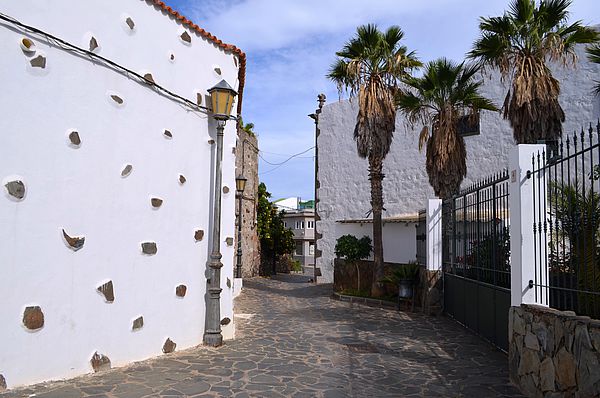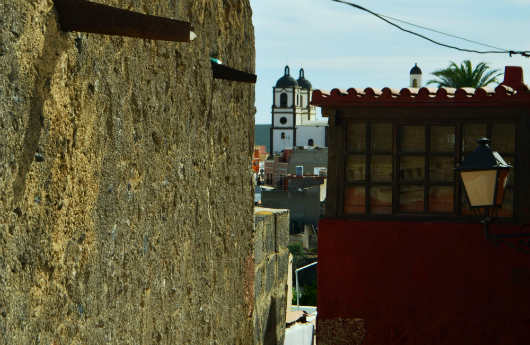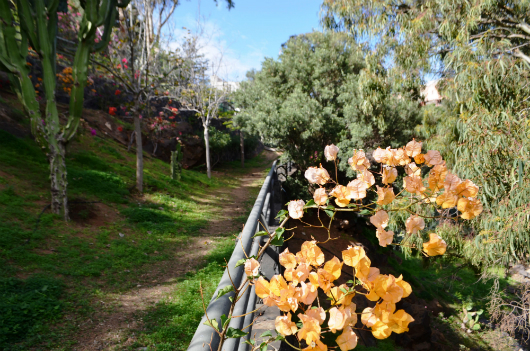At first sight, Ingenio might not seem to be a tourism hotspot, as it doesn’t give us a grand welcome in all its regalia. But make no mistake, there are hundreds of great spots to visit around here, and lots of places to lose yourself in. Today we bring you to El Sequero, the oldest district of the municipality. It stands right at the top of the oldest part of town. Our ramble today kicks off at the bridge at the end of Calle Rueda.
The ravine called “El Barranquillo” by the locals runs under this bridge. Even today when there is heavy rain, water cascades down its ravine bed. Although it is not that common today, when it happens it provides and attractive picture postcard scene.

The bridge has become just another road to pass along as its main function has now lost the essential role it used to have, when it joined up separate neighbourhoods together, and was the only access to the local church. The Parish of Our Lady of La Candelaria was built from local stone, prior to this reconstruction it was formerly a small hermitage that dated from 1815.
There are still neighbours from the oldest district in town who are not that keen on moving far from their municipality, and you can stop and have a chat with them. Paradoxically though, it is they who can widen our map. They can tell of well kept secrets about local sugar cane activity, and the abundant waters that used to flow much more frequently down the ravine, and the gradual decline of agriculture in favour of tourism.

They can easily point out the tallest palm tree on the island, or fill you in on the origins of the town’s name. Ingenio, the name of the municipality, comes from the word sugar mill, referring to the machines that processed the sugar cane that was cultivated in the region and constituted the main source of wealth around the 18th century. There are many names given to this and other crops. El Sequero is one of them, as it was once an area of land dedicated to the cultivation of wheat, barley and rye.
The streets and street corners at this old part of town preserve a purity that passers-by can easily identify with. From here, we can catch the aromas of recently baked bread, giving us an insight into the history and evolution of Ingenio. It is one of the unrepeatable delicacies of the region’s traditional cuisine. Its pan de puño, bread is very well known.

There are still traditional bakeries dotted around the town who continue to make this tasty and punchy loaf in the old-fashioned way. One such place belongs to Amaro, just a few metres away from Cruz de la Torre, near to Néstor Park and in the hillside around El Sequero, called El Puente Bakery.
As we make our way up Calle Rueda and walk along the cobbled streets of El Sequero, we are aware of the tranquility of the area and the beauty of the popular local architecture, with its typical single storey houses. Some are filled with flowers, some more open and exposed, while others are a little more closed off, in a district that invites you to take a peek inside.
At the bottom of the hill, the Barranquillo and Néstor Park you can continue in breathe in the fresh air as you move on. Enjoy the walk and enjoy a happy ending to your day.
- Guayadeque Ravine
This is one of the largest ravines in the Canary Islands. It splits the municipalities of Agüimes and Ingenio down the middle. One of the best views of it can be had in winter, when the almond trees here are in full bloom. Its cave-houses, museum and restaurants offering typical local cuisine add a spark to this natural enclave.
- Canary Stone and Craft Museum
A place that promotes traditional Canary lacework. See first hand how the laborious process of this popular art is done, an art which has stood the test of time and features prominently in modern fashion designs, including at the Gran Canaria Moda Cálida Parade.